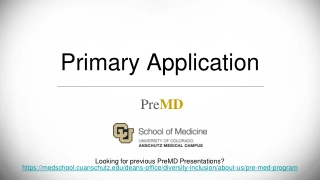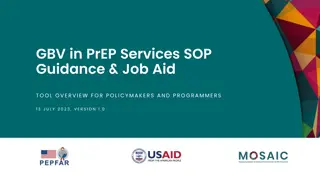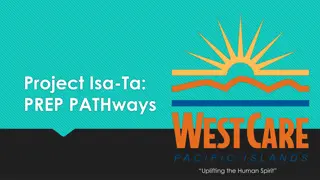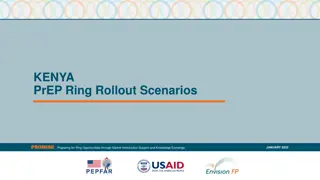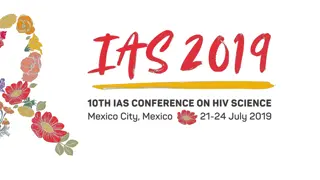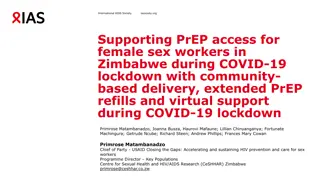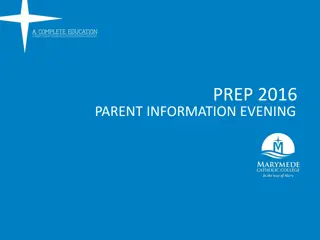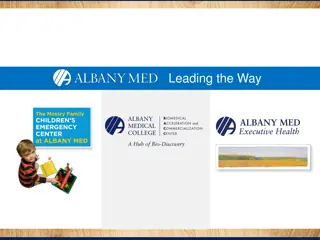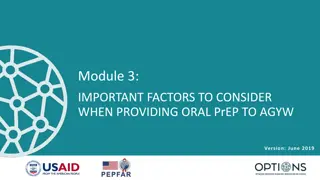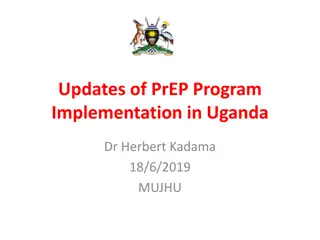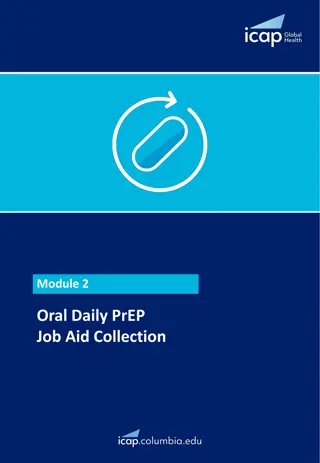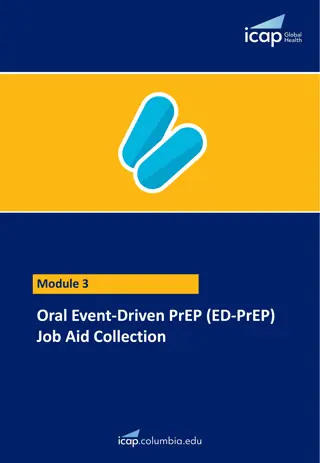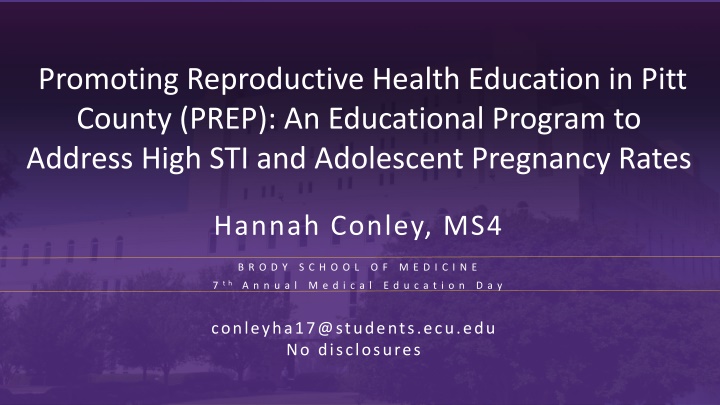
Promoting Reproductive Health Education in Pitt County: A Comprehensive Program Addressing High STI and Teen Pregnancy Rates
"Learn how the PREP program targets high STI and adolescent pregnancy rates in Pitt County, NC through comprehensive sexual health education. Discover the objectives, methods, and results of this educational initiative aiming to increase self-efficacy, sexual health knowledge, and condom use among at-risk adolescents."
Download Presentation

Please find below an Image/Link to download the presentation.
The content on the website is provided AS IS for your information and personal use only. It may not be sold, licensed, or shared on other websites without obtaining consent from the author. If you encounter any issues during the download, it is possible that the publisher has removed the file from their server.
You are allowed to download the files provided on this website for personal or commercial use, subject to the condition that they are used lawfully. All files are the property of their respective owners.
The content on the website is provided AS IS for your information and personal use only. It may not be sold, licensed, or shared on other websites without obtaining consent from the author.
E N D
Presentation Transcript
Promoting Reproductive Health Education in Pitt County (PREP): An Educational Program to Address High STI and Adolescent Pregnancy Rates Hannah Conley, MS4 B R O D Y S C H O O L O F M E D I C I N E 7t h A n n u a l M e d i c a l E d u c a t i o n D a y conleyha17@students.ecu.edu No disclosures
Introduction In Pitt County, NC, rates of gonorrhea, chlamydia, and syphilis are above state and national averages.1 From 2017 to 2018, Pitt County teen pregnancy rates increased from 19.0 to 22.1.1 While education alone does not decrease risky sexual behaviors, states that taught comprehensive sex education, which included information on contraception, condom use, and abstinence, tended to have lower pregnancy and STI rates than states that taught abstinence-only education.2 This educational project was developed to help decrease these rates. Project objectives: 1. To implement a comprehensive sexual health curriculum for at-risk adolescents. 2. To demonstrate positive effects of comprehensive sex education on self- efficacy, sexual health knowledge, and rates of condom use. Sources: 1. 2. NC Statistics and Reports- County-level. NC SCHS. https://schs.dph.ncdhhs.gov/data/county.cfm. Stanger-Hall KF, Hall DW. Abstinence-only education and teen pregnancy rates: why we need comprehensive sex education in the U.S. PLoS One. 2011;6(10):e24658. doi:10.1371/journal.pone.0024658
Methods Location: 2 Boys & Girls Clubs in Pitt County- Jack Minges and Ayden Participants: 8-12th graders. Parental consent was obtained. 3 pre- and post-program surveys were administered. General Self-Efficacy Scale,3 a previously validated survey Comprehensive knowledge assessment GTO sexual health measurement tool,4 a previously validated survey Rights, Respect, Responsibility curriculum was used.5 Meets the National Sexuality Education Standards, which address both the functional knowledge related to sexuality and the specific skills necessary to adopt healthy behaviors. Rights. Respect. Responsibility Curriculum Sources: 3. Schwarzer, R., & Jerusalem, M. Generalized Self-Efficacy scale. In J. Weinman, S. Wright, & M. Johnston, Measures in health psychology: A user s portfolio. Causal and control beliefs. 1995; pp 35-37. 4. Chinman, M, J Acosta, P Ebener, C Sigel, and J Keith. Getting to Outcomes Guide for Teen Pregnancy Prevention. RAND Corporation, 2016. https://www.rand.org/pubs/tools/TL199.html. 5. Rights, Respect, Responsibility. https://3rs.org/3rs-curriculum/3rs-curric-search/. 2020.
Results 110 adolescents attended 1 of the program sessions. 37 adolescents completed pre- and post-program surveys. Attendance was inconsistent so we only used matched surveys for pre and post data. Mean comprehensive knowledge assessment scores increased significantly from pre- to post-program from 70.5% to 79.6%.
Conclusions Participants demonstrated increased self-efficacy, sexual health knowledge and condom use intention rates. Increased self-efficacy helps teens overcome misinformation and develop confidence to reduce their level of risk.4 Increased condom use intentions should decrease STI and pregnancy rates. Implementation of this curriculum could: Reduce sexual risk-taking Delay or reduce sexual activity Increase condom use Limitations: small sample size, lack of participant follow-up. Future research should investigate longitudinal data with an emphasis on participant knowledge retention and self-efficacy to better understand strategies to improve STI and teen pregnancy rates. Source: 4. Chinman, M, J Acosta, P Ebener, C Sigel, and J Keith. Getting to Outcomes Guide for Teen Pregnancy Prevention. RAND Corporation, 2016. https://www.rand.org/pubs/tools/TL199.html

